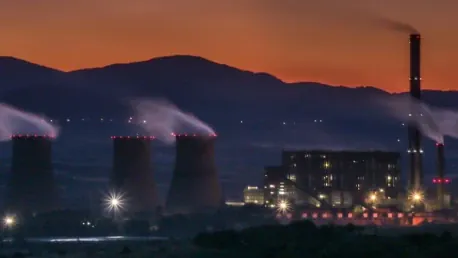The urgent need to address climate change has spurred a global search for effective and sustainable energy solutions. Amidst this quest, nuclear energy has been championed by a diverse set of advocates, including governments, energy companies, and tech entrepreneurs like Bill Gates. However, Dr. M.V. Ramana, an expert in global disarmament and human security, argues against the expansion of nuclear power in his book, Nuclear is Not the Solution: The Folly of Atomic Power in the Age of Climate Change. This article explores his critical perspectives on nuclear energy and advocates for renewable energy alternatives.
The High Costs and Slow Deployment of Nuclear Power
One of the primary arguments against nuclear energy is its high cost and prolonged deployment times. Establishing a nuclear power plant is an expensive endeavor, often requiring significant financial investment that far exceeds the costs of renewable energy projects. Furthermore, the time required to bring a nuclear plant from conception to operation can span over a decade. This extended timeline includes obtaining environmental clearances, securing community consent, and arranging substantial funding. Given the pressing need to reduce global carbon emissions promptly, the lengthy deployment of nuclear power plants does not align with the urgency demanded by climate scientists.
Investments in solar and wind energy, in contrast, are not only more affordable but also quicker to deploy. These renewable energy sources can be scaled up and integrated into existing energy grids in a fraction of the time required for nuclear energy. Consequently, funds allocated to renewable energy projects yield significantly higher reductions in carbon emissions per dollar spent, making them a more practical and efficient solution.
The Risk of Catastrophic Nuclear Accidents
A significant concern surrounding nuclear energy is the potential for catastrophic accidents. Historical events like the Fukushima and Chernobyl disasters serve as potent reminders of the severe consequences that can arise from nuclear power plant failures. These incidents have resulted in long-lasting environmental damage, significant economic losses, and health impacts on affected populations. Despite advances in technology and safety protocols, the possibility of another nuclear disaster cannot be entirely ruled out.
The inherent risks of nuclear power make it a less appealing option when compared to renewable energy sources. Solar and wind power generation methods do not carry the same catastrophic potential, thereby offering a safer and more reliable path towards reducing carbon emissions. The decentralized and scalable nature of renewable energy systems further mitigates the risks associated with large-scale energy production.
Environmental and Health Impacts of the Nuclear Fuel Cycle
Beyond the risk of accidents, the entire nuclear fuel cycle—from uranium mining to waste management—poses substantial environmental and health risks. Uranium mining can result in soil and water contamination, adversely affecting local ecosystems and communities. The processing and enrichment of uranium also produce hazardous by-products that require careful handling and disposal.
One of the most pressing issues is the management of radioactive waste, which remains hazardous for hundreds of thousands of years. There is currently no fully proven solution for the long-term storage and disposal of nuclear waste, raising concerns about its impact on future generations. In contrast, renewable energy sources such as solar and wind do not produce hazardous waste, making them a cleaner and more sustainable option.
The Connection Between Nuclear Energy and Weapons Proliferation
Another critical issue with nuclear power is its potential link to nuclear weapons proliferation. The technology and materials used in nuclear energy can be diverted to the development of nuclear weapons, posing a significant threat to global security. The spread of nuclear energy technology increases the risk of proliferation, making it a contentious and complex issue on the international stage.
Renewable energy technologies, on the other hand, do not have such dual-use concerns. The focus on solar, wind, and other renewable sources thus eliminates the risk of contributing to nuclear weapons proliferation, providing a more secure path for global energy development.
The Advantages of Renewable Energy Solutions
The pressing need to combat climate change has led the world to actively seek effective and sustainable energy solutions. Among these options, nuclear energy has garnered support from a wide and varied group of advocates, including national governments, large energy corporations, and technology entrepreneurs like Bill Gates. Despite this popular backing, Dr. M.V. Ramana, a noted authority on global disarmament and human security, presents a compelling case against the expansion of nuclear power. In his book, Nuclear is Not the Solution: The Folly of Atomic Power in the Age of Climate Change, Dr. Ramana examines the shortcomings of nuclear energy and argues for the adoption of renewable energy alternatives instead. This article delves into his critical viewpoints, highlighting the concerns and risks associated with nuclear power. By examining Dr. Ramana’s arguments, we can better understand the potential drawbacks of nuclear energy and the growing importance of renewable resources in addressing climate change effectively.









